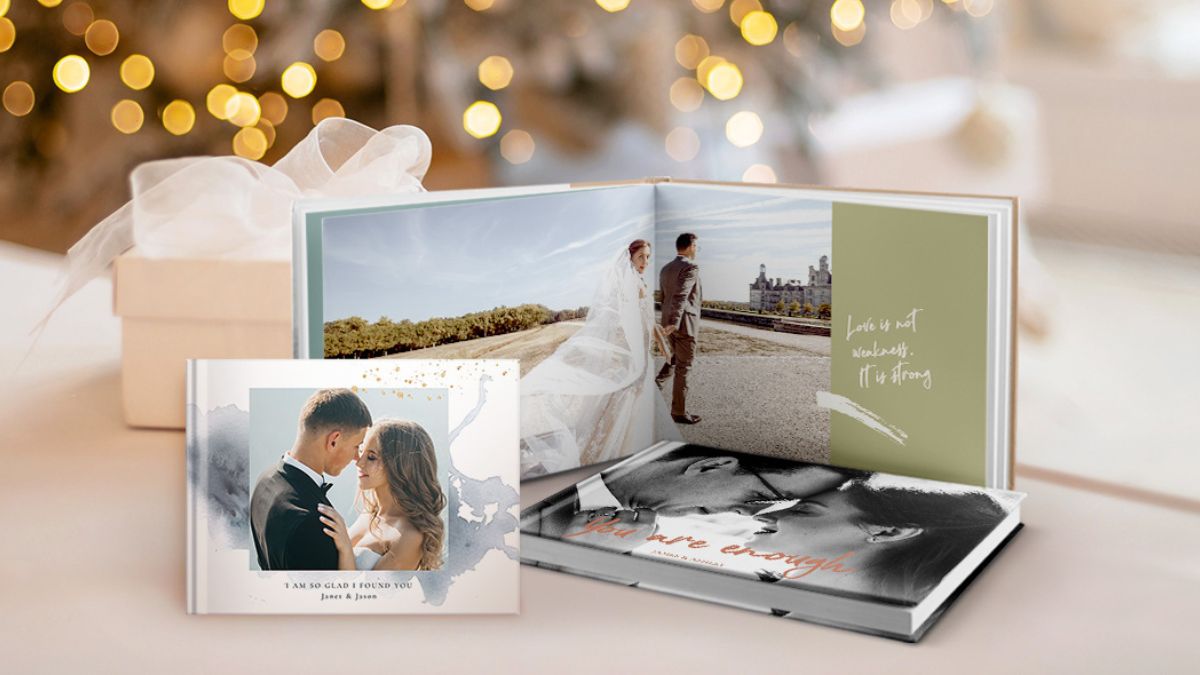Your wedding day is one of life’s most memorable milestones, overflowing with love, laughter, and once-in-a-lifetime moments. And what better way to relive those memories than with a beautifully designed wedding photobook?
A high-quality wedding album doesn’t just preserve your photos, it tells your love story in a way that’s timeless and personal. Whether you’re a bride, groom, or photographer putting it together for a client, these tips will help you design a photobook that’s worth every page turn.
Relive the Moments in Order
Every wedding has a unique narrative, from getting ready with your loved ones to that emotional walk down the aisle. Before diving into layouts and backgrounds, take a moment to outline the story you want your photobook to tell. A chronological flow usually works best, but you can also group photos by theme for example, the bridal party, pre-wedding, ceremony, reception, and post-wedding moments. If you’ve captured a lot of special moments, consider creating multiple photobooks to highlight each stage of the celebration.
Use High-Quality, Clear Photos
No matter how beautiful your layout or cover design is, blurry or poorly lit images can take away from the final product. Prioritize sharp, high-resolution photos that capture detail and emotion. When choosing between similar shots, always go with the one that looks more polished and professional.
- Avoid pixelated or grainy images
- Stick to the original file sizes whenever possible
- Don’t over-edit — natural lighting and colors preserve the genuine beauty of each moment
Choose the Right Size and Format
Photobooks come in various sizes, bindings, and orientations. The format you choose should not only fit the number of photos you plan to include but also reflect the theme and flow of the wedding story you’re telling.
- Larger sizes (such as “14 x 10”) allow your images to make a statement. They’re great when you want the visuals to take center stage. On the other hand, smaller sizes (like 8″x 6″ or 11″ x 8.5″) are perfect for more intimate storytelling or for creating copies as thoughtful gifts for family and friends.
- Layflat binding is perfect for showcasing wide-angle or panoramic shots without interruption. The seamless pages allow images to flow beautifully across spreads, making it ideal for grand ceremony shots.
- Hardcovers offer a durable, long-lasting option with a polished, premium finish. They give your photobook a keepsake-worthy presence — something couples will proudly display on their coffee table for years to come.
Balance Layout and White Space
Good design is all about balance. Avoid cramming too many photos on one page and give your images room to breathe with clean layouts and consistent margins. Use full-spread images for dramatic moments, and sprinkle in minimalist layouts for quieter ones. White space not only draws attention to your photos but also adds a refined, sophisticated touch.
Add Personal Touches
Meaningful captions and quotes can make your wedding photobook even more special by giving context to the moments captured and preserving the emotions behind them. The key is to keep things simple and timeless. When choosing fonts, avoid overly fancy or decorative styles that can distract from your photos or feel dated over time. Instead, opt for clean, legible fonts that complement your photobook’s overall design and enhance its elegance.
Review Before You Print
Before you hit the “order” button, take the time to carefully review your entire photobook layout. This final step is crucial to ensure your precious memories are presented flawlessly.
Here are some key areas to double-check:
- Typos and spelling errors: Names, captions, dates, and locations should be accurate — nothing detracts from a keepsake more than a misspelled name or incorrect detail.
- Image quality: Look out for low-resolution or blurry photos that might not print well. Make sure each image is sharp and clear.
- Alignment and consistency: Ensure text boxes, photo borders, and margins are aligned consistently throughout the book. Uneven layouts can make your photobook look less polished.
- Page flow and story continuity: Flip through your photobook to see if the sequence of images and text tells a smooth, natural story. Transitions between pages should feel effortless and maintain the narrative flow.
Whether you’re a newlywed or a photographer helping clients hold on to their happiest memories, these tips will help you design a high-quality photobook that feels just as special as the day itself.
